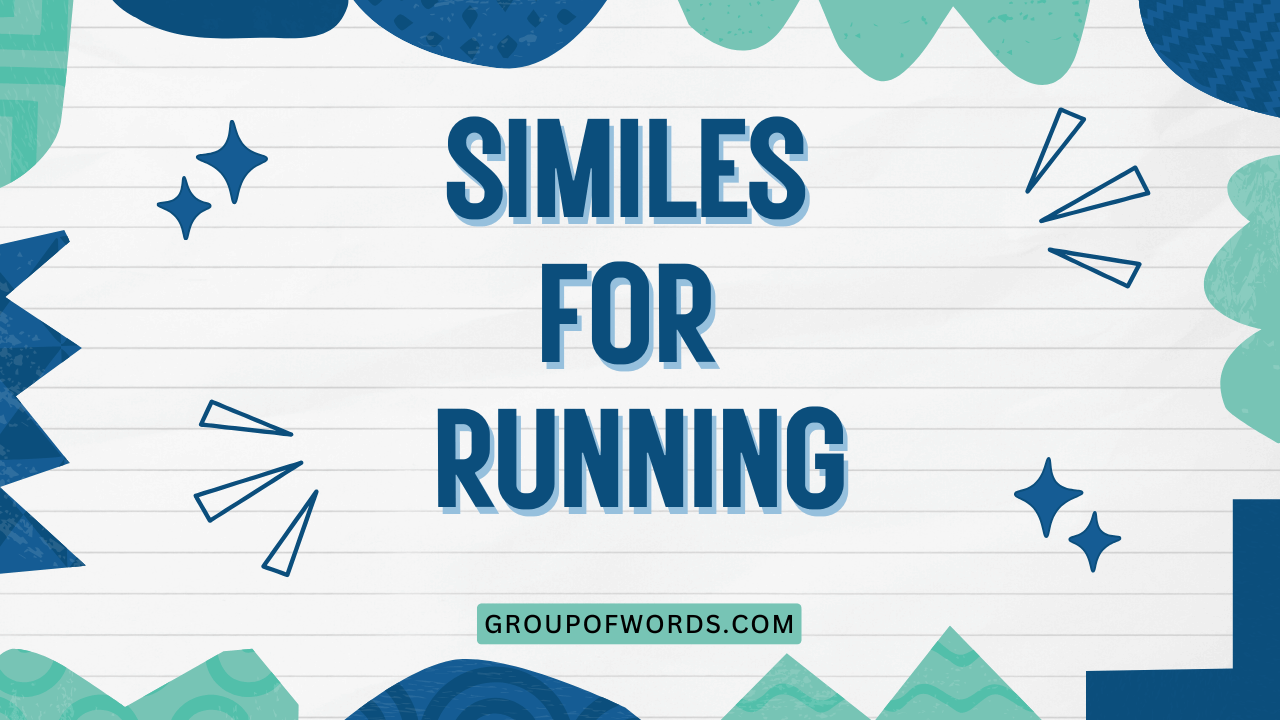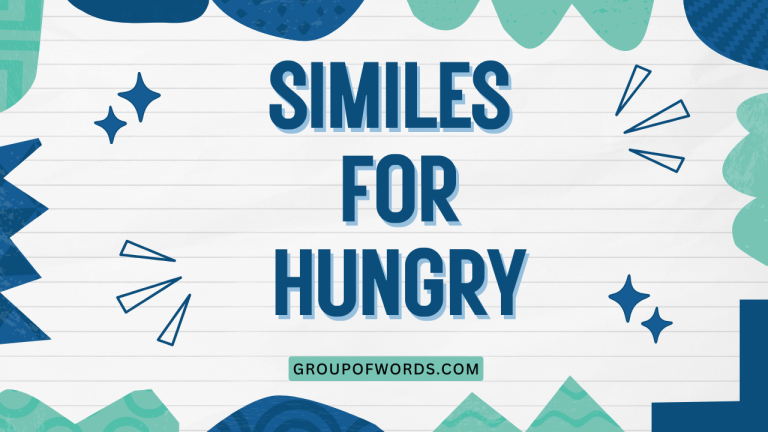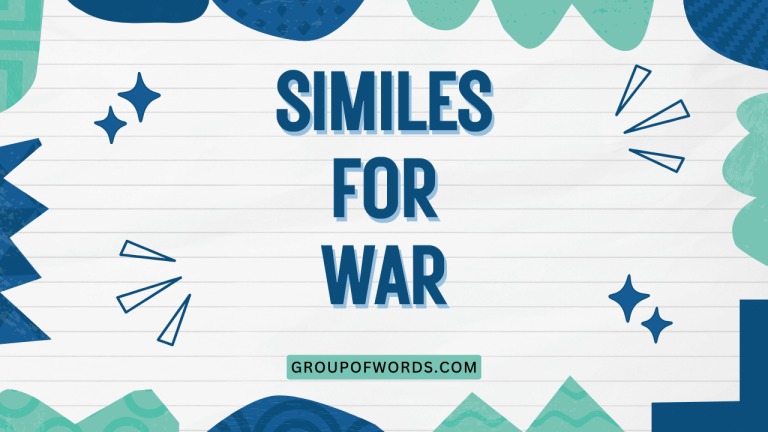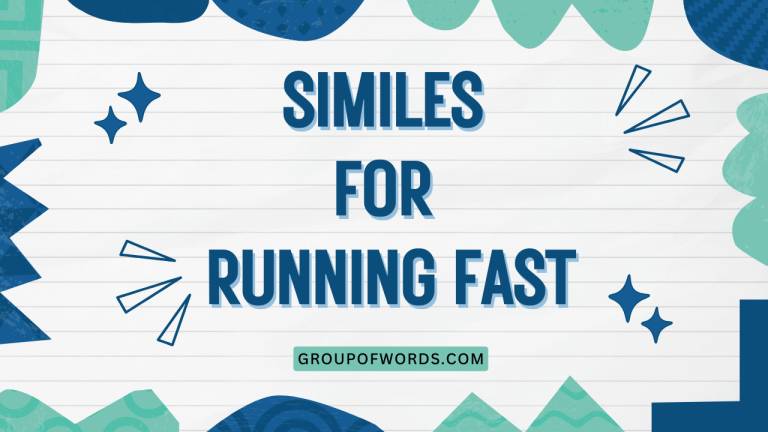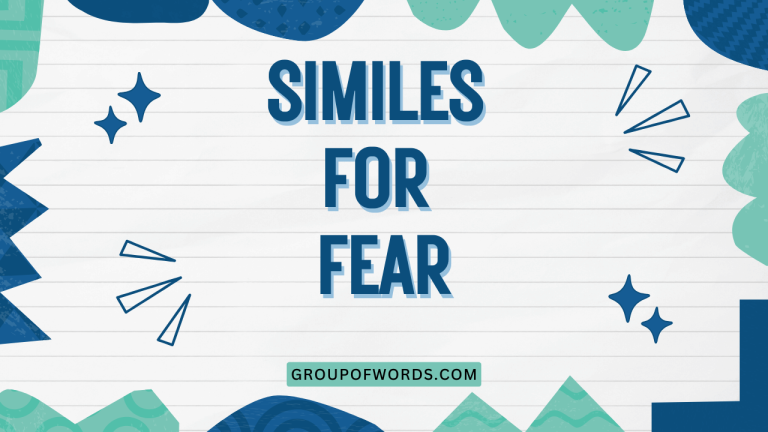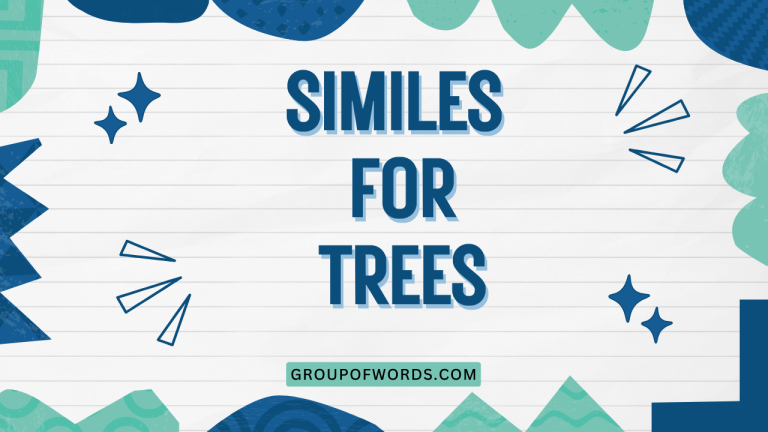Running Similes: A Guide to Figurative Language in Motion
Similes are powerful tools in the English language, allowing us to paint vivid pictures and draw insightful comparisons. When it comes to describing the act of running, similes can bring the experience to life, capturing its speed, effort, and emotional impact.
Understanding how to effectively use similes for running not only enhances your writing but also deepens your appreciation for the nuances of language. This guide is designed for students, writers, and anyone looking to enrich their vocabulary and descriptive abilities.
Whether you’re crafting a thrilling race narrative or simply want to add flair to your everyday conversations, mastering running similes will make your language more dynamic and engaging.
This article will explore the definition of similes, their structure, different categories relevant to running, usage rules, common mistakes, and advanced applications. Through numerous examples and practice exercises, you’ll gain a solid understanding of how to craft and use similes effectively to describe the act of running.
Table of Contents
- Definition: What is a Simile?
- Structural Breakdown of Similes
- Types of Running Similes
- Examples of Running Similes
- Usage Rules for Similes
- Common Mistakes with Similes
- Practice Exercises
- Advanced Topics in Similes
- Frequently Asked Questions (FAQ)
- Conclusion
Definition: What is a Simile?
A simile is a figure of speech that compares two unlike things using the words “like” or “as.” Its primary function is to create a vivid image or enhance understanding by highlighting a shared characteristic between the two subjects being compared. Similes are essential tools in descriptive writing, allowing authors and speakers to convey complex ideas or emotions in a relatable and engaging way. They are commonly found in literature, poetry, everyday conversation, and advertising.
Unlike metaphors, which directly equate two things (e.g., “He is a lion”), similes make an explicit comparison (e.g., “He is as brave as a lion”). This distinction is crucial, as similes offer a more nuanced and less absolute comparison.
They suggest a similarity rather than a complete identity. The effectiveness of a simile lies in choosing comparisons that are both imaginative and relevant to the context.
Similes enhance clarity by connecting the unfamiliar to the familiar. For example, describing a runner as “fast as a cheetah” immediately conveys a sense of incredible speed.
This makes similes particularly useful in explaining abstract or complex concepts. They are also powerful tools for creating emotional resonance, allowing writers to evoke specific feelings in their audience by associating a subject with emotionally charged imagery.
Structural Breakdown of Similes
The basic structure of a simile consists of three key elements: the subject, the connecting word (“like” or “as”), and the object of comparison. The subject is the thing being described or compared. The connecting word establishes the comparison, and the object of comparison is the thing to which the subject is being likened.
The general formula can be expressed as: Subject + Connecting Word + Object of Comparison. Let’s break this down with an example related to running:
- Subject: The runner
- Connecting Word: as
- Object of Comparison: a gazelle
- Complete Simile: The runner is as fast as a gazelle.
In this example, “the runner” is the subject being described. “As” is the connecting word that establishes the comparison.
“A gazelle” is the object of comparison, providing a vivid image of speed and agility. The simile works because gazelles are known for their exceptional speed, making the comparison relevant and effective.
Similes can also be structured using variations of “like” and “as,” such as “similar to,” “resembling,” or “in the same way as.” While these variations are less common, they can add nuance and sophistication to your writing. For example, instead of saying “He runs like the wind,” you could say “His running resembles the relentless force of the wind.” This variation adds a layer of intensity to the comparison.
Types of Running Similes
Running similes can be categorized based on the aspect of running they emphasize. This categorization helps in selecting the most appropriate simile to convey a specific meaning or create a particular effect.
Speed Similes
Speed similes focus on the velocity and pace of running. They often compare runners to fast animals, vehicles, or natural phenomena known for their swiftness.
These similes are useful for emphasizing the quickness and dynamism of a runner’s movement. They capture the raw power and acceleration involved in running at high speeds.
Effort Similes
Effort similes highlight the exertion and energy expended during running. They often compare the runner’s struggle to challenging tasks, heavy weights, or arduous journeys.
These similes convey the physical and mental effort required to overcome obstacles and push through fatigue. They emphasize the determination and resilience of the runner.
Style Similes
Style similes describe the manner or technique of running. They can compare a runner’s gait to graceful animals, fluid movements, or elegant dances.
These similes focus on the aesthetics and form of running, emphasizing the smoothness, efficiency, or artistry of the runner’s technique. They capture the visual appeal and rhythm of the runner’s motion.
Emotional Similes
Emotional similes relate the feeling or state of mind experienced while running. They can compare the runner’s emotions to intense feelings, dramatic events, or transformative experiences.
These similes convey the psychological impact of running, emphasizing the exhilaration, frustration, or sense of accomplishment associated with the activity. They capture the emotional journey of the runner.
Environmental Similes
Environmental similes describe the surroundings or conditions in which the running takes place. They can compare the terrain to challenging landscapes, the weather to extreme conditions, or the atmosphere to vibrant settings.
These similes emphasize the impact of the environment on the running experience, highlighting the challenges, beauty, or obstacles encountered along the way. They capture the sensory details of the runner’s surroundings.
Examples of Running Similes
The following sections provide extensive examples of running similes, organized by category. Each example illustrates how to effectively use “like” or “as” to create vivid comparisons and enhance descriptive writing.
Speed Similes Examples
These examples showcase similes that emphasize the speed of a runner. They compare the runner’s velocity to various fast-moving entities.
| Simile | Explanation |
|---|---|
| He ran as fast as a cheetah. | Compares the runner’s speed to the exceptional speed of a cheetah. |
| She sprinted like a rocket. | Compares the runner’s acceleration to the rapid launch of a rocket. |
| They moved as quickly as lightning. | Compares the runner’s speed to the instantaneous flash of lightning. |
| He was off like a shot. | Comparing the runner’s sudden departure to the firing of a gun. |
| She flew like the wind. | Comparing the runner’s swiftness to the speed of the wind. |
| The marathoner surged ahead as fast as a bullet train. | Illustrates the runner’s incredible speed with a modern comparison. |
| He dashed off like a startled deer. | Captures the sudden and rapid movement of a runner. |
| She ran as if the devil was on her heels. | Emphasizes the urgency and speed motivated by fear. |
| He accelerated like a sports car. | Compares the runner’s increasing speed to that of a fast vehicle. |
| She blazed past like a shooting star. | Highlights the runner’s brilliance and speed. |
| He ran as fast as mercury. | Comparing the runner’s speed to the quicksilver element. |
| She moved like a greased piglet. | Evokes an image of slipperiness and speed. |
| They sprinted as if their lives depended on it. | Emphasizes the urgency and desperation behind their running speed. |
| He took off like a bat out of hell. | Uses a vivid idiom to describe sudden and rapid departure. |
| She was as quick as a hiccup. | Emphasizes the sudden, fleeting nature of her speed. |
| He ran like a scalded cat. | Comparing the runner’s sudden burst of speed to a cat that has been burned. |
| She moved like a whippet. | Comparing the runner’s agility and speed to that of a whippet dog. |
| He accelerated as fast as a dragster. | Illustrates the runner’s rapid acceleration with an emphasis on power. |
| She sprinted like a torpedo. | Compares the runner’s direct and forceful speed to a naval weapon. |
| He ran as quick as a hummingbird’s wings. | Highlights the rapid and almost imperceptible nature of the runner’s pace. |
| She ran like an antelope fleeing a predator. | Captures the desperation and agility of the runner’s escape. |
| His pace was as relentless as a runaway train. | Emphasizes the unstoppable nature of his speed. |
| She darted through the crowd like a water strider on a pond. | Highlights her agility and swiftness in navigating obstacles. |
Effort Similes Examples
These examples illustrate similes that highlight the effort and strain of running. They compare the runner’s exertion to various challenging experiences.
| Simile | Explanation |
|---|---|
| He ran as if his lungs were on fire. | Compares the runner’s labored breathing to the sensation of burning lungs. |
| She pushed herself like a machine. | Compares the runner’s relentless effort to the tireless work of a machine. |
| They struggled as if climbing a mountain. | Compares the runner’s exertion to the difficulty of climbing a steep mountain. |
| His legs felt like lead. | Illustrates the heavy, sluggish feeling in the runner’s legs. |
| She breathed like a winded horse. | Compares the runner’s heavy breathing to that of an exhausted horse. |
| Running that last mile felt like wading through treacle. | Emphasizes the slow, sticky, and difficult progress of the runner. |
| He was sweating like a pig. | Highlights the excessive perspiration due to intense effort. |
| Her muscles ached like they were being torn apart. | Conveys the intense pain and strain experienced during exertion. |
| He ran as if carrying the weight of the world on his shoulders. | Illustrates the mental and physical burden of the effort. |
| She felt like she was running through molasses. | Emphasizes the slow, sticky, and resistant sensation of the run. |
| He labored like a pack mule up the hill. | Comparing the runner to a heavily burdened animal struggling uphill. |
| She persevered like a soldier in battle. | Comparing the runner’s endurance to the resilience of a soldier. |
| They strained as if pulling a heavy rope. | Comparing the runner’s physical strain to the effort of pulling something heavy. |
| He pushed himself like Sisyphus pushing his boulder. | Comparing the runner’s continuous effort to the mythological figure’s endless task. |
| She felt like she was running against a brick wall. | Comparing the runner’s struggle to an insurmountable obstacle. |
| He fought through the pain like a gladiator. | Comparing the runner’s resilience to the strength of a gladiator fighting through pain. |
| She breathed as heavily as a steam engine. | Comparing the runner’s labored breathing to a powerful machine. |
| They struggled as if swimming against a strong current. | Comparing the runner’s effort to the difficulty of swimming against a strong force. |
| He ran like a man possessed. | Comparing the runner to someone driven by an intense, almost uncontrollable force. |
| She endured as if she had nerves of steel. | Comparing the runner’s resilience to the strength of steel. |
| Running through the mud was like wading through quicksand. | Illustrates the sinking, difficult nature of the terrain. |
| His breath came as ragged as torn cloth. | Emphasizes the strained, uneven nature of his breathing. |
| He pushed through the pain like a blacksmith working hot iron. | Highlights the effort and endurance required to overcome discomfort. |
Style Similes Examples
These examples showcase similes that describe the style and form of running. They compare the runner’s movement to graceful or elegant entities.
| Simile | Explanation |
|---|---|
| He ran as gracefully as a deer. | Compares the runner’s smooth movement to the elegance of a deer. |
| She moved like a dancer. | Compares the runner’s fluid motion to the artistry of a dancer. |
| They flowed like water. | Compares the runner’s seamless movement to the fluidity of water. |
| His stride was as smooth as silk. | Illustrates the effortless and refined nature of the runner’s steps. |
| She ran with the lightness of a feather. | Compares the runner’s delicate movement to the weightlessness of a feather. |
| He leaped over the hurdles like a gazelle bounding across the plains. | Emphasizes the grace and agility of the runner’s hurdle technique. |
| Her running style was as fluid as a dolphin swimming in the ocean. | Highlights the effortless and smooth nature of her movement. |
| He navigated the course as deftly as a seasoned acrobat. | Compares the runner’s skill to the precision of an acrobat. |
| She moved through the crowd like a whisper. | Illustrates her unobtrusive and silent running style. |
| His gait was as rhythmic as a perfectly tuned metronome. | Emphasizes the consistent and precise nature of his running. |
| He floated over the ground like thistledown in a breeze. | Comparing the runner’s effortless style to the lightness of thistledown. |
| She ran with the precision of a well-oiled machine. | Comparing the runner’s style to the efficiency of a machine. |
| They glided over the terrain like skaters on ice. | Comparing the runner’s ease to the smoothness of skating. |
| He moved as silently as a shadow. | Comparing the runner’s quiet movement to the stillness of a shadow. |
| She danced through the obstacles like a ballerina. | Comparing the runner’s grace to the elegance of a ballerina. |
| His footsteps were as light as a cat’s. | Comparing the runner’s quiet steps to the stealth of a cat. |
| She ran like a symphony in motion. | Comparing the runner’s movement to the harmony of music. |
| They weaved through the course as deftly as a river finds its path. | Comparing the runner’s navigation to the natural course of a river. |
| He moved with the confidence of a seasoned athlete. | Comparing the runner’s style to the assurance of an athlete. |
| She ran with the elegance of a swan gliding on water. | Comparing the runner’s grace to the serene beauty of a swan. |
Emotional Similes Examples
These examples illustrate similes that relate to the emotional state of the runner. They compare the runner’s feelings to various intense emotions or experiences.
| Simile | Explanation |
|---|---|
| He felt as free as a bird. | Compares the runner’s sense of liberation to the freedom of a bird. |
| She ran like she was running from her demons. | Compares the runner’s motivation to escape from personal struggles. |
| They felt as if they were floating on air. | Compares the runner’s exhilaration to the sensation of weightlessness. |
| His heart pounded like a drum. | Illustrates the intense excitement or anxiety felt by the runner. |
| She ran with the determination of a lioness protecting her cubs. | Compares the runner’s resolve to the fierce protectiveness of a lioness. |
| The adrenaline coursed through him like electricity. | Highlights the energizing and stimulating effect of adrenaline. |
| She felt as though she was running towards a new beginning. | Emphasizes the hopeful and transformative aspect of the run. |
| He ran with the joy of a child. | Compares the runner’s enthusiasm to the pure happiness of a child. |
| She felt as light as a feather, carried by the wind of her ambition. | Illustrates the sense of ease and purpose driven by aspiration. |
| He ran with the fury of a storm. | Compares the runner’s intensity to the raw power of a storm. |
| She felt as though she were running towards her destiny. | Comparing the runner’s feeling to the pursuit of a predetermined path. |
| He ran with the passion of a fiery sunset. | Comparing the runner’s intensity to the vibrant colors of a sunset. |
| They felt as united as a flock of birds in flight. | Comparing the runner’s togetherness to birds flying in formation. |
| She ran as if she were chasing a dream. | Comparing the runner’s motivation to the pursuit of an aspiration. |
| He felt the hope rising within him like the sun. | Comparing the runner’s optimism to the rising sun. |
| She ran with the quiet strength of a deep river. | Comparing the runner’s resilience to the power of a river. |
| He felt as though he were escaping a cage. | Comparing the runner’s liberation to escaping confinement. |
| She ran with the lightness of a spirit set free. | Comparing the runner’s freedom to the liberation of a spirit. |
| They felt as though they were part of something larger than themselves. | Comparing the runner’s feeling to being connected to something greater. |
| He ran with the single-mindedness of a heat-seeking missile. | Comparing the runner’s focus to the precision of a missile. |
| She ran as if she could outrun her own shadow. | Highlights the futility and determination in her attempt to escape. |
| He felt as though he were running away from his past. | Emphasizes the desire to leave behind former burdens or regrets. |
| She sprinted with the desperation of someone reaching for a lifeline. | Illustrates the urgency and importance of the goal she’s striving towards. |
Environmental Similes Examples
These examples showcase similes that describe the environment in which the running takes place. They compare the surroundings to various landscapes or conditions.
| Simile | Explanation |
|---|---|
| The road stretched out like a ribbon. | Compares the long, winding road to a ribbon. |
| The air was as thick as soup. | Compares the humid air to the dense consistency of soup. |
| The forest felt like a cathedral. | Compares the serene atmosphere of the forest to the grandeur of a cathedral. |
| The path was as uneven as a washboard. | Illustrates the bumpy and rough nature of the trail. |
| The rain fell like needles. | Compares the sharp, stinging sensation of the rain to needles. |
| The desert stretched out before them like an endless sea of sand. | Highlights the vastness and desolation of the desert landscape. |
| The wind howled like a banshee. | Compares the eerie sound of the wind to the wail of a banshee. |
| The mountains loomed like giants. | Illustrates the imposing size and presence of the mountains. |
| The sun beat down like a hammer. | Compares the intense heat of the sun to the force of a hammer. |
| The trail wound through the forest like a snake. | Illustrates the twisting and turning nature of the path. |
| The city streets felt like a maze. | Comparing the confusing layout of the city to a labyrinth. |
| The morning mist hung like a shroud. | Comparing the dense fog to a covering or veil. |
| The sunset blazed like an inferno. | Comparing the vibrant colors of the sunset to a fire. |
| The air smelled as fresh as a mountain spring. | Comparing the crisp scent to the purity of spring water. |
| The moonlight shimmered like scattered diamonds. | Comparing the light to the brilliance of diamonds. |
| The forest floor was as soft as a carpet of moss. | Comparing the ground to the softness of moss. |
| The lake sparkled like a thousand stars. | Comparing the light on the water to the brilliance of stars. |
| The snow crunched underfoot like broken glass. | Comparing the sound of the snow to the sharp noise of glass. |
| The fog rolled in like a ghostly tide. | Comparing the movement of the fog to the sea. |
| The heat shimmered off the asphalt like waves. | Comparing the distortion of heat to the motion of water. |
| The path twisted and turned like a coiled serpent. | Highlights the unpredictable and winding nature of the trail. |
| The air hung heavy like a wet blanket. | Emphasizes the oppressive humidity and stillness of the atmosphere. |
| The finish line appeared like a mirage in the distance. | Illustrates the deceptive and tantalizing nature of the goal ahead. |
Usage Rules for Similes
When using similes, it’s crucial to follow certain rules to ensure clarity and effectiveness. Adhering to these guidelines will help you create impactful and meaningful comparisons.
- Ensure Relevance: The object of comparison should be relevant to the subject. The shared characteristic must be logical and easily understood by the reader. Avoid comparisons that are too abstract or obscure.
- Avoid Clichés: While some similes are widely used, avoid overused clichés such as “as busy as a bee” or “as strong as an ox.” Instead, strive for originality and creativity in your comparisons.
- Maintain Clarity: The simile should enhance understanding, not confuse the reader. Choose objects of comparison that are familiar to your audience. If the object is unfamiliar, the simile will lose its effectiveness.
- Use Sparingly: Similes are powerful tools, but overuse can diminish their impact. Use them judiciously to highlight key aspects or create vivid imagery, rather than peppering your writing with unnecessary comparisons.
- Consider Context: The appropriateness of a simile depends on the context in which it is used. Consider the tone, audience, and purpose of your writing when selecting a simile.
A good simile should not only be accurate but also add depth and interest to your writing. It should create a memorable image or evoke a specific emotion in the reader.
By following these usage rules, you can master the art of simile and enhance your descriptive abilities.
Common Mistakes with Similes
Even experienced writers can make mistakes when using similes. Understanding these common errors can help you avoid them and improve the quality of your writing.
| Mistake | Incorrect Example | Correct Example | Explanation |
|---|---|---|---|
| Using Metaphors Instead of Similes | He was a cheetah on the track. | He was as fast as a cheetah on the track. | Metaphors directly equate two things, while similes use “like” or “as” to make a comparison. |
| Using Unclear Comparisons | She ran like something. | She ran like a gazelle. | The object of comparison should be specific and easily understood. |
| Overusing Clichés | He was as fast as lightning. | He was as swift as a peregrine falcon diving. | Avoid overused comparisons that lack originality. |
| Using Illogical Comparisons | He ran like a refrigerator. | He ran like a bull. | The comparison should be logical and make sense in the context. |
| Using Too Many Similes | He ran like a cheetah, as swift as the wind, like a rocket. | He ran as fast as a cheetah. | Avoid overwhelming the reader with too many comparisons. |
| Misusing “Like” and “As” | He ran as a cheetah. | He ran like a cheetah. | “Like” is used to compare nouns or pronouns, while “as” is used to compare clauses or phrases. |
By being aware of these common mistakes, you can refine your use of similes and ensure that your writing is clear, effective, and engaging. Always double-check your comparisons to ensure they are logical, original, and appropriate for the context.
Practice Exercises
Test your understanding of similes with these practice exercises. Each exercise includes a set of questions and their corresponding answers.
These exercises will help you reinforce your knowledge and improve your ability to create and identify effective similes.
Exercise 1: Identifying Similes
Identify the similes in the following sentences.
| Question | Answer |
|---|---|
| 1. The runner’s determination was as solid as a rock. | as solid as a rock |
| 2. She is a star athlete. | (No simile) |
| 3. He moved through the crowd like a ghost. | like a ghost |
| 4. The marathon was a grueling test of endurance. | (No simile) |
| 5. The finish line seemed as distant as the moon. | as distant as the moon |
| 6. His muscles felt like iron. | like iron |
| 7. The track was a winding path to victory. | (No simile) |
| 8. She ran with the lightness of a feather. | with the lightness of a feather |
| 9. His breath came as ragged as torn cloth. | as ragged as torn cloth |
| 10. He was a machine on the racecourse. | (No simile) |
Exercise 2: Completing Similes
Complete the following similes with appropriate objects of comparison.
| Question | Answer |
|---|---|
| 1. He ran as fast as a __________. | cheetah |
| 2. She felt as light as a __________. | feather |
| 3. His determination was as strong as __________. | steel |
| 4. The air was as thick as __________. | soup |
| 5. The road stretched out like a __________. | ribbon |
| 6. The runner looked as tired as a __________. | dog |
| 7. His heart beat like a __________. | drum |
| 8. She ran as gracefully as a __________. | deer |
| 9. They pushed as hard as a __________. | machine |
| 10. The heat felt like a __________. | furnace |
Exercise 3: Creating Similes
Create original similes for the following subjects related to running.
| Subject | Possible Simile |
|---|---|
| The runner’s speed | The runner’s speed was as startling as a thunderclap on a summer’s day. |
| The runner’s effort | The runner’s effort felt like scaling a never-ending staircase. |
| The runner’s style | The runner’s style was as smooth as a jazz melody. |
| The runner’s emotion | The runner’s joy was as radiant as the morning sun. |
| The environment | The trail was as unforgiving as a rocky coastline. |
| The runner’s breath | The runner’s breath was as ragged as an old sail in a storm. |
| The runner’s focus | The runner’s focus was as intense as a hawk eyeing its prey. |
| The runner’s lightness | The runner’s lightness was like that of a dandelion seed floating on the breeze. |
| The runner’s determination | The runner’s determination was as unwavering as the North Star. |
| The runner’s strength | The runner’s strength was like the steady current of a deep river. |
Advanced Topics in Similes
For those looking to deepen their understanding and application of similes, there are several advanced topics to explore. These include the use of extended similes, complex comparisons, and the integration of similes into broader literary devices.
- Extended Similes: An extended simile, also known as a Homeric simile, is a detailed and elaborate comparison that can span several lines or even an entire paragraph. Unlike simple similes, extended similes delve into multiple aspects of the comparison, creating a richer and more immersive image.
- Complex Comparisons: Similes can be made more complex by layering multiple comparisons or incorporating figurative language. This involves combining similes with metaphors, personification, or hyperbole to create a multi-faceted description.
- Integration with Literary Devices: Effective use of similes involves integrating them seamlessly into the overall narrative or poetic structure. This includes considering the rhythm, sound, and flow of the language to enhance the impact of the simile.
By exploring these advanced topics, writers can elevate their simile usage from simple comparisons to sophisticated literary techniques. This requires a deep understanding of language, imagery, and the art of storytelling.
Frequently Asked Questions (FAQ)
This section addresses common questions about similes, providing clear and concise answers to help clarify any remaining uncertainties.
- Q: What is the difference between a simile and a metaphor?
- A: A simile compares two things using “like” or “as,” while a metaphor directly equates two things without using these words.
- Q: Can a simile be a cliché?
- A: Yes, if it is overused and lacks originality. Strive to create fresh and imaginative comparisons.
- Q: How many similes should I use in a piece of writing?
- A: Use them sparingly to enhance key aspects or create vivid imagery, rather than overwhelming the reader with too many comparisons.
- Q: What makes a good simile?
- A: A good simile is relevant, clear, original, and adds depth and interest to your writing.
- Q: Can similes be used in everyday conversation?
- A: Yes, similes are commonly used in everyday conversation to make descriptions more vivid and engaging.
- Q: How do I avoid making mistakes with similes?
- A: Ensure your comparisons are logical, original, and appropriate for the context. Double-check your usage of “like” and “as.”
- Q: What are the benefits of using similes in writing?
- A: Similes enhance clarity, create vivid imagery, evoke emotions, and make your writing more engaging and memorable.
Conclusion
Mastering the art of using similes can significantly enhance your descriptive writing and communication skills. By understanding the definition, structure, types, and usage rules of similes, you can create vivid and engaging comparisons that bring your words to life.
Whether you’re describing the speed of a runner, the effort they exert, or the environment in which they run, similes offer a powerful tool for conveying your message effectively. Remember to avoid common mistakes, practice regularly, and explore advanced techniques to continually refine your skills.
As you continue to explore the world of similes, remember that the key to success lies in creativity, relevance, and clarity. By crafting original and meaningful comparisons, you can transform your writing from ordinary to extraordinary, capturing the essence of running and sharing it with your audience in a compelling and memorable way.
So, lace up your linguistic shoes and start running with similes!
